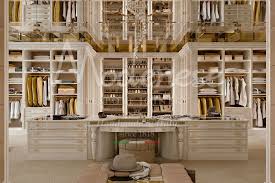The open kitchen became the poster child of modern living over the last two decades. Whether in Pinterest-worthy apartments or luxury Dubai villas, open-plan layouts connected the kitchen with dining and living zones, promising a more inclusive, sociable home environment.
But in 2025, as cooking habits evolve and lifestyles shift, a question has started surfacing among architects, homeowners, and designers alike: are open kitchens really practical—or have they been overhyped?
Let’s dive into the real pros and cons, and explore why zoned culinary spaces are re-entering the design conversation.
What Is an Open Kitchen?
An open kitchen integrates with other areas of the home, most often the living or dining room, with little or no partition. It aims to create seamless visual and functional flow, typically in modern or compact layouts.
Common traits include:
- No doors or walls separating the kitchen
- Kitchen island doubling as dining or work space
- Shared flooring and ceiling treatment with adjacent areas
Why Open Kitchens Became Popular
| Reason | Why It Worked |
|---|---|
| Urban living | Maximizes space in compact apartments |
| Socialising | Hosts can interact while cooking |
| Aesthetics | Creates a sense of openness and continuity |
| Daylight access | Better light circulation across rooms |
The trend was driven by aspirational living. An open kitchen looked modern, made spaces feel bigger, and worked well for show homes and model apartments.
The Drawbacks of Open Kitchens
With experience and evolving needs, homeowners have started recognising limitations of the open concept.
1. Lack of Privacy
Not every meal prep looks Instagram-worthy. For those who cook frequently, dealing with clutter in plain sight can be exhausting.
2. Noise and Smell Travel
Blenders, pressure cookers, and frying pans don’t make the best background soundtrack. And smells, no matter how delicious, can linger across cushions and curtains.
3. Disrupted Zoning
With no boundaries, the space can often feel undefined, especially in larger homes. There’s little distinction between where work ends and leisure begins.
4. Design Compromises
Because it’s always visible, homeowners may compromise on utility in favour of aesthetics—open shelves instead of storage-heavy cabinets, for example.
The Return of Zoned Culinary Spaces
Zoned kitchens are not necessarily closed-off. They introduce partial separations—like glass partitions, sliding doors, half-walls, or arches—to bring definition without sacrificing openness.
Why people are gravitating toward zoning again:
- Offers better sound, smell, and clutter control
- Adds architectural interest to layouts
- Encourages more focused use of space
- Makes room for specialised appliances and layouts without visual overload
Types of Zoned Kitchen Layouts Gaining Popularity
| Layout Type | Description | Ideal For |
|---|---|---|
| Semi-open | Partially enclosed with glass or sliding doors | Homes that want a balance of privacy and light |
| Galley + Pantry | Narrow, enclosed space with an adjacent prep or dirty kitchen | Busy families or food enthusiasts |
| Niche-style | Tucked into a corner or an alcove | Apartments or compact floor plans |
| Split-level | Slight change in elevation or flooring defines the kitchen | Villas or larger homes |
Developers in UAE Rethinking Kitchen Spaces
Some developers are starting to move away from fully open layouts, especially in mid to premium segments.
Recent observations:
- New launches include multi-purpose storage walls to subtly divide kitchen and dining areas
- Glass-partitioned kitchens are popular in Sobha and Ellington properties
- Studio apartments feature “flex walls” to zone off the kitchen during hosting or meetings
What Designers Say
Architects in Dubai report a growing interest in hybrid solutions. Instead of reverting completely to closed kitchens, residents want options—spaces that can adapt based on use.
Popular suggestions include:
- Retractable partitions
- Pocket doors
- Raised breakfast bars that hide counters
- Sliding wall panels
What’s Better: Open or Zoned?
Ultimately, it depends on the lifestyle and usage pattern. Here’s a quick comparison:
| Feature | Open Kitchen | Zoned Kitchen |
|---|---|---|
| Visibility | Always visible | Can be hidden if needed |
| Cooking style | Light, occasional | Frequent or heavy-duty |
| Social needs | High interaction | Some privacy preferred |
| Cleaning tolerance | Must be spotless | Can hide mess |
| Noise/smell control | Minimal | More effective |
The open kitchen isn’t obsolete, but it’s no longer the only gold standard. In 2025, homeowners are looking beyond trends, designing for how they actually live.
Zoned culinary spaces offer flexibility. They can create boundaries without building walls, allowing people to cook, host, and unwind without compromise.
As lifestyle demands shift toward function, mindfulness, and multi-use design, perhaps the smartest kitchens won’t be the most open—but the most adaptable.

)
)
)
)




